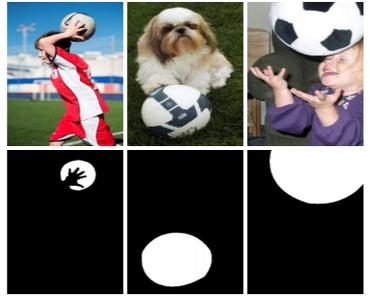Gradient-Induced Co-Saliency Detection
Co-saliency detection (Co-SOD) aims to segment the common salient foreground in a group of relevant images. In this paper, inspired by human behavior, we propose a gradient-induced co-saliency detection (GICD) method. We first abstract a consensus representation for the grouped images in the embedding space; then, by comparing the single image with consensus representation, we utilize the feedback gradient information to induce more attention to the discriminative co-salient features. In addition, due to the lack of Co-SOD training data, we design a jigsaw training strategy, with which Co-SOD networks can be trained on general saliency datasets without extra pixel-level annotations. To evaluate the performance of Co-SOD methods on discovering the co-salient object among multiple foregrounds, we construct a challenging CoCA dataset, where each image contains at least one extraneous foreground along with the co-salient object. Experiments demonstrate that our GICD achieves state-of-the-art performance. Our codes and dataset are available at https://mmcheng.net/gicd/.
PDF Abstract ECCV 2020 PDF ECCV 2020 Abstract






 ImageNet
ImageNet
 MS COCO
MS COCO
 DUTS
DUTS
 CoSal2015
CoSal2015
